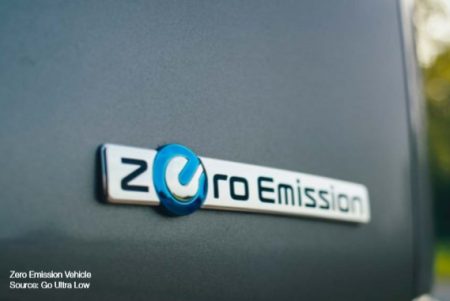July 10, 2018 – The United Kingdom’s government is on a mission to be effectively zero emission by 2040 with almost every car and van no longer contributing greenhouse gases to the atmosphere. In its report, The Road to Zero, it has set 46 separate goals including the following ten:
- Increasing low carbon fuels for existing road transport usage before these vehicles can be phased out by mid-century.
- Continuing to offer incentives to owners of plug-in cars, vans, taxis, and motorcycles to increase their usage on British roads.
- Committing to a goal of 25% ultra-low emission vehicles in the government’s fleet by 2022, and 100% by 2030.
- Working with industry to develop ultra-low emission transport trucks for use on British roads.
- Increasing public research and development investment in zero-emission technology to 2.4% of GDP by 2027.
- Investing in an expanded charging infrastructure including deployment at existing service station networks, businesses, communal parking places, and individual homes.
- Making all new-build housing electric-vehicle ready.
- Installing charging points in all new street lighting.
- Creating an Electric Vehicle Energy Taskforce to ensure that energy demand is matched by supply in a sustainable way.
- Monitoring the progress being made to ensure no significant gaps appear in the overall strategy to meet the mid-century near zero-emission targets.
The government sees this strategy as core to its mission to make the United Kingdom a zero-emission centre of excellence in global markets.
Today Britain has more than 150,000 low-emission vehicles on its roads and 14,000 charge stations throughout the country. There are 38 different car and 9 different van models eligible for government plug-in incentives. In 2017, 1 in every 8 zero-emission vehicles bought in Europe was British built. Now the government wants to do much better with the goal to achieve mass adoption approaching 100% for zero-emission new car and van sales by 2040 and to have all vehicles on British roads near zero-emission by mid-century.
The government’s commitment to the funding of research and development will include battery-powered, hydrogen fuel cell, and conventional fossil fuels (diesel, gasoline, and natural gas) with the focus on the latter aimed at lowering greenhouse gas emissions from source to tailpipe output.
As much as this report is to be commended, the timelines within it, like so many other countries’ commitments that I read, are set far in the future, well beyond the mandate of current governments, and with little in the way of immediate measurable yearly reductions. Even the industry-wide targets for vehicle greenhouse gas emissions in the U.K. are voluntary and minuscule (a 15% reduction from 2015 emission levels by 2025).









